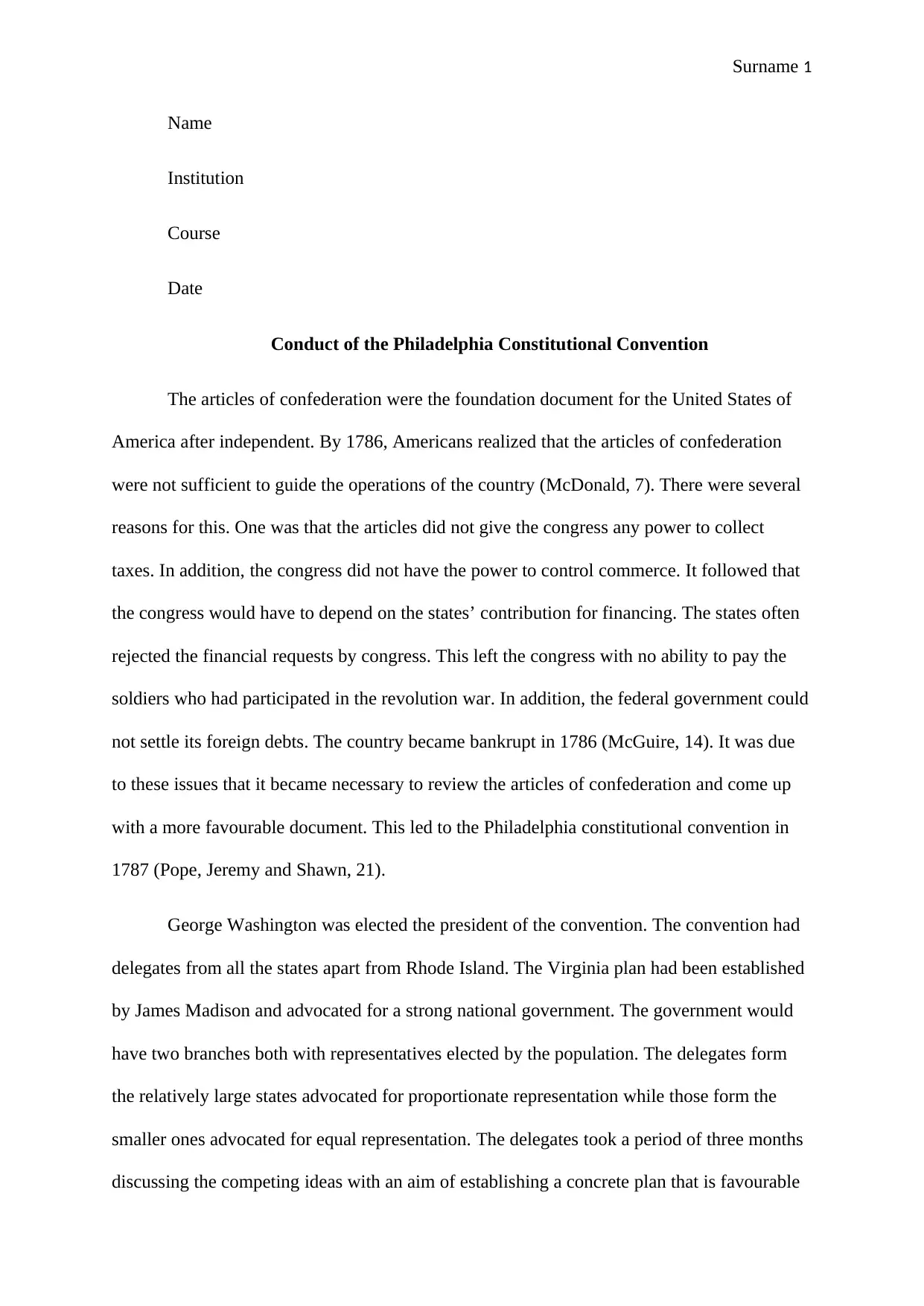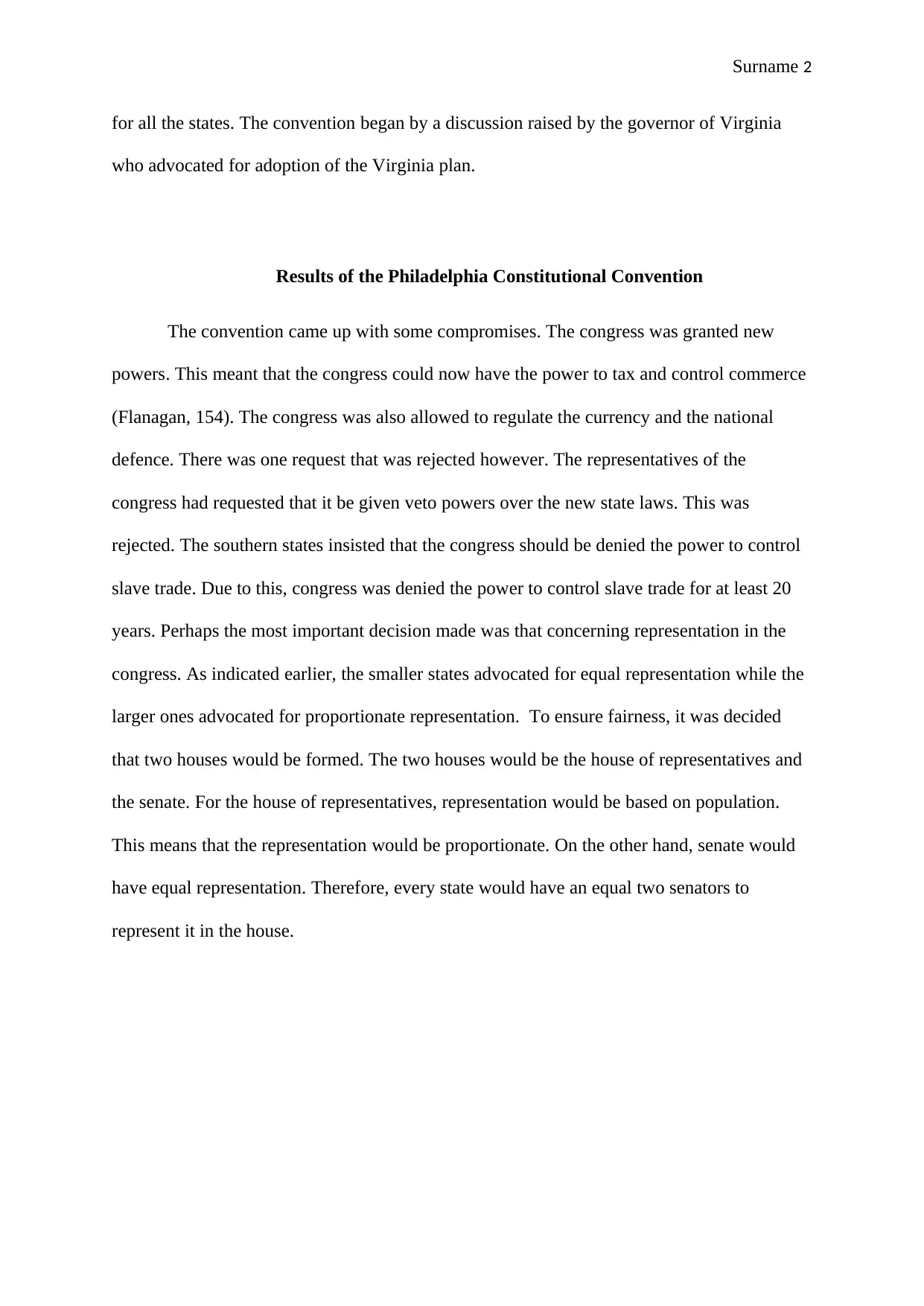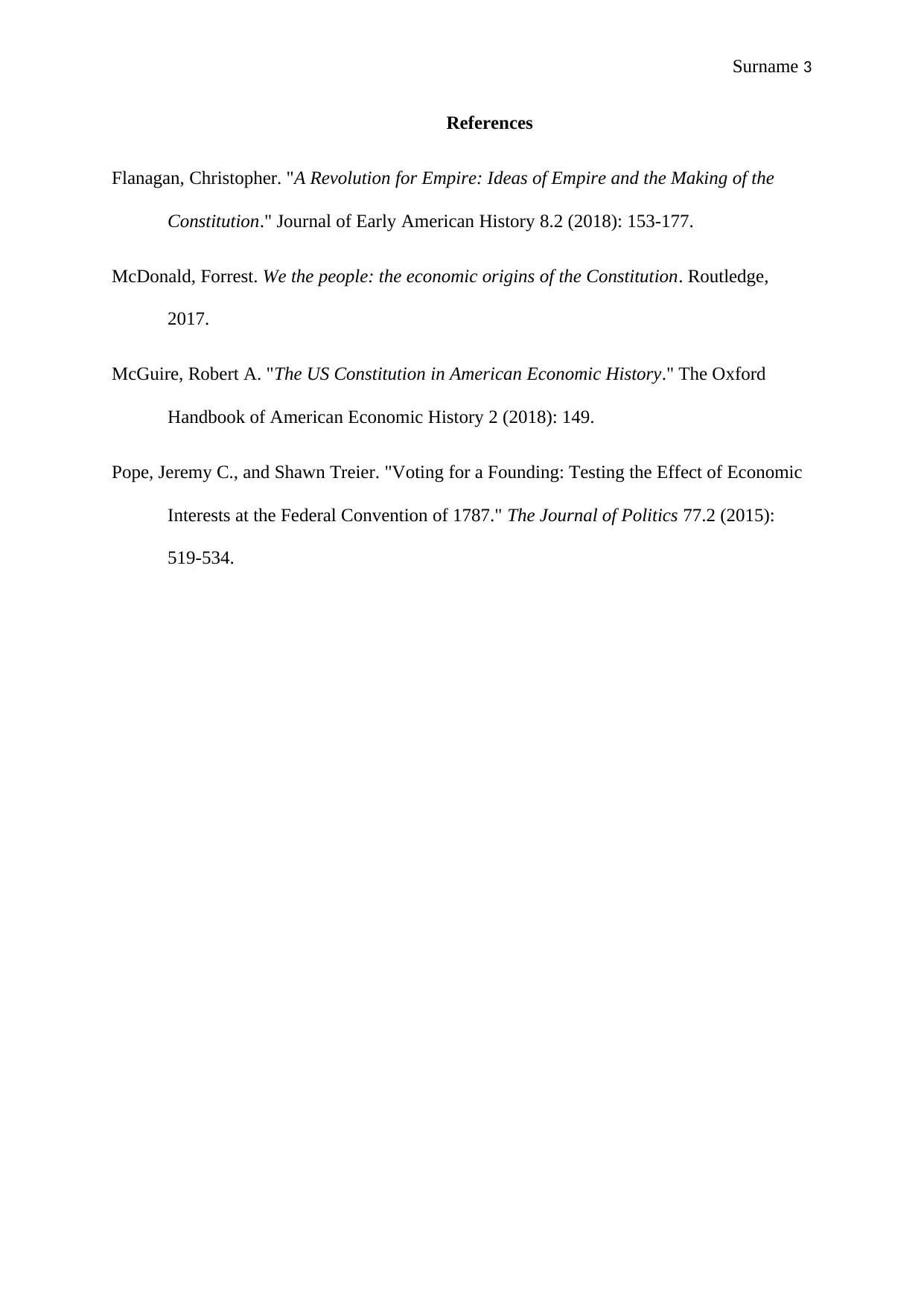The Philadelphia Constitutional Convention: A Detailed Analysis
VerifiedAdded on 2023/05/28
|3
|693
|231
Report
AI Summary
This report provides an analysis of the Philadelphia Constitutional Convention of 1787. The report begins by discussing the weaknesses of the Articles of Confederation, which led to the convening of the convention. The report highlights key issues, including the Virginia Plan, debates on representation, and the powers of the congress. The report also discusses the compromises made, such as the establishment of a bicameral legislature and the handling of the slave trade. The report references the decisions made by the congress and how it was granted new powers to tax and control commerce, regulate currency and the national defense. The report details the convention's impact on the formation of the US government and the key decisions that shaped the future of the country.
1 out of 3








![[object Object]](/_next/static/media/star-bottom.7253800d.svg)